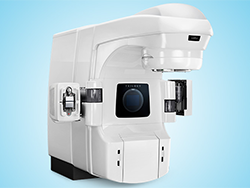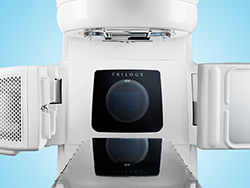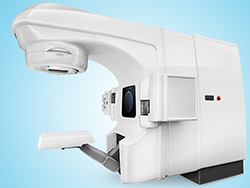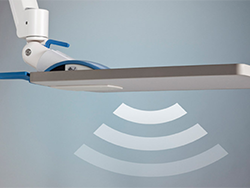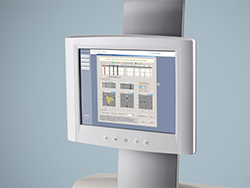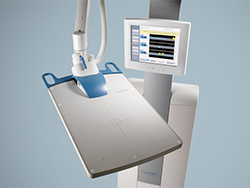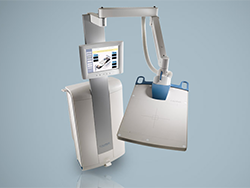Calypso System
Breathing, coughing and normal digestive activity can cause the prostate organ to move during treatment, making targeted radiation challenging. Because the Calypso system monitors prostate movement and tracks the tumor in real time during each treatment session, radiation can be delivered accurately and precisely, with limited radiation exposure to surrounding tissues and organs.
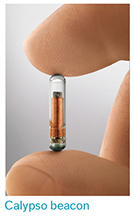 To track movement, three electromagnetic beacons are permanently implanted in the prostate during a minimally invasive outpatient procedure that takes place before radiation treatment begins. During treatment, the beacons emit a radio signal that communicates with an electromagnetic array positioned over the patient. The array locates and tracks the position of the prostate. If the tumor moves out of range, the radiation beam automatically pauses, and treatment resumes when the tumor re-enters the predetermined field.
To track movement, three electromagnetic beacons are permanently implanted in the prostate during a minimally invasive outpatient procedure that takes place before radiation treatment begins. During treatment, the beacons emit a radio signal that communicates with an electromagnetic array positioned over the patient. The array locates and tracks the position of the prostate. If the tumor moves out of range, the radiation beam automatically pauses, and treatment resumes when the tumor re-enters the predetermined field.
The Calypso system’s ability to track prostate movement minimizes the risk of underdosing the tumor, reduces the exposure of healthy tissue to additional radiation and decreases serious side effects.
The Calypso Difference
Traditional methods for limiting organ movement during radiation include immobilizing the patient and daily verification of the prostate’s position, also referred to as localization. Other localization techniques, such as using implanted gold markers, X-ray images and ultrasound scans, involve imaging the tumor before each radiation session. The Calypso technology is different because it allows continuous real-time, accurate monitoring of a tumor’s position without the need for imaging, which exposes patients to more radiation.
Calypso Clinical Data
A recent clinical study determined that when the Calypso system was used in treatment, patients reported a reduction in some of the side effects of radiation treatment, such as bowel symptoms and urinary irritation/obstruction when compared with patients who were not treated with Calypso. Results also indicated reduced sexual dysfunction at two months, which may be related to the decrease in reported urinary and bowel symptoms. Long-term sexual dysfunction side effects may not appear for one year, and the study showed little impact on urinary incontinence. For more details on the study, go to varian.com/calypso.
For more information about the Calypso system and prostate cancer treatment at North Kansas City Hospital, call 816.691.5216.
